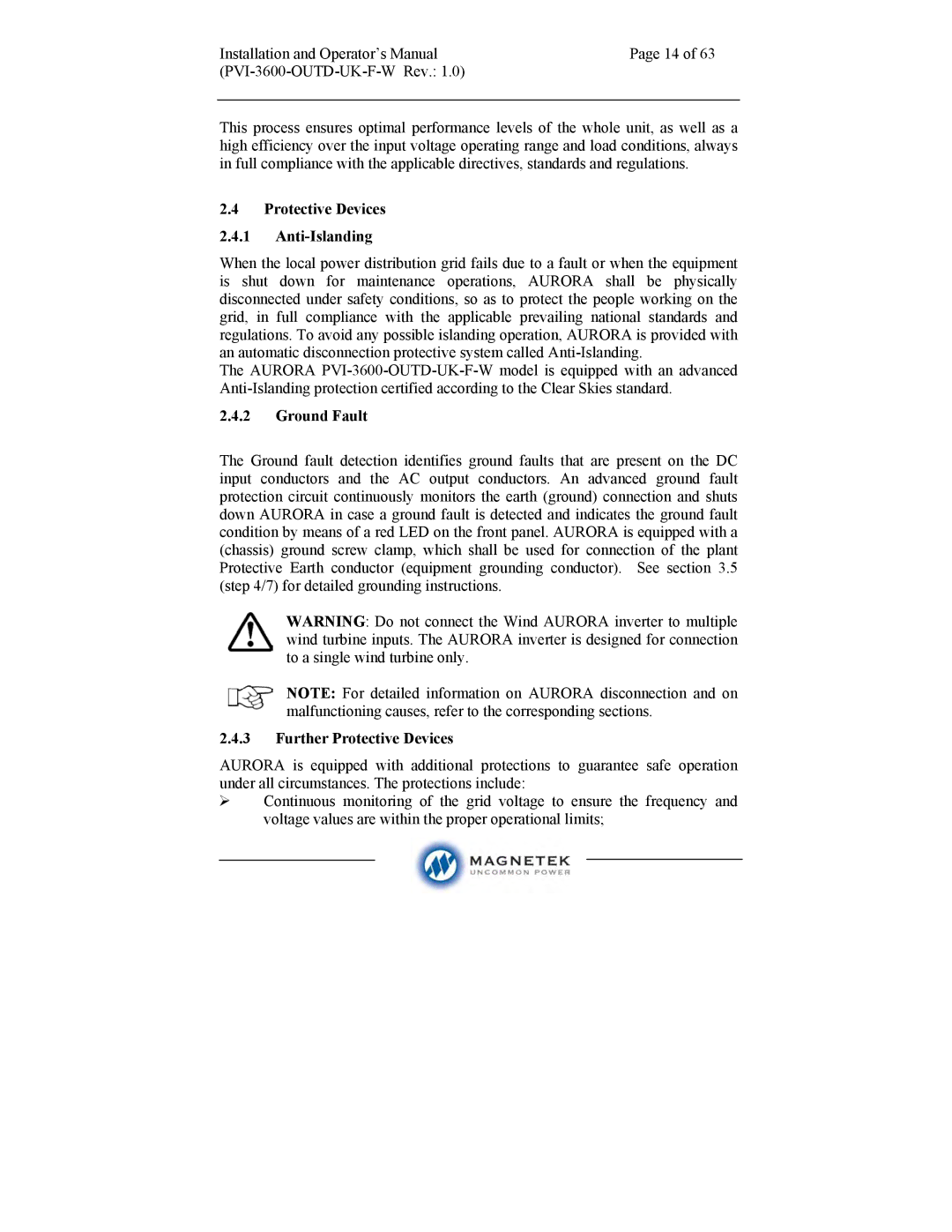
Installation and Operator’s Manual | Page 14 of 63 |
|
This process ensures optimal performance levels of the whole unit, as well as a high efficiency over the input voltage operating range and load conditions, always in full compliance with the applicable directives, standards and regulations.
2.4Protective Devices
2.4.1Anti-Islanding
When the local power distribution grid fails due to a fault or when the equipment is shut down for maintenance operations, AURORA shall be physically disconnected under safety conditions, so as to protect the people working on the grid, in full compliance with the applicable prevailing national standards and regulations. To avoid any possible islanding operation, AURORA is provided with an automatic disconnection protective system called
The AURORA
2.4.2Ground Fault
The Ground fault detection identifies ground faults that are present on the DC input conductors and the AC output conductors. An advanced ground fault protection circuit continuously monitors the earth (ground) connection and shuts down AURORA in case a ground fault is detected and indicates the ground fault condition by means of a red LED on the front panel. AURORA is equipped with a (chassis) ground screw clamp, which shall be used for connection of the plant Protective Earth conductor (equipment grounding conductor). See section 3.5 (step 4/7) for detailed grounding instructions.
WARNING: Do not connect the Wind AURORA inverter to multiple wind turbine inputs. The AURORA inverter is designed for connection to a single wind turbine only.
NOTE: For detailed information on AURORA disconnection and on malfunctioning causes, refer to the corresponding sections.
2.4.3Further Protective Devices
AURORA is equipped with additional protections to guarantee safe operation under all circumstances. The protections include:
Continuous monitoring of the grid voltage to ensure the frequency and voltage values are within the proper operational limits;
